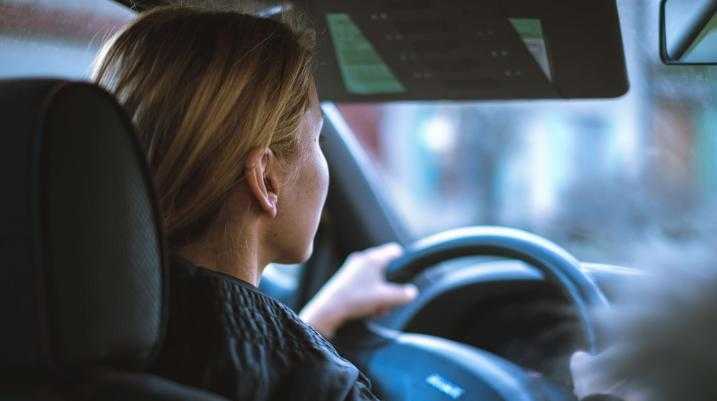Teen Driving Statistics and Laws: What You Need to Know

Teen driving is a milestone that represents freedom for first-time drivers (and new responsibility). However, it also comes with significant risks.
Teenagers are disproportionately involved in motor vehicle crashes, and the consequences often ripple across families and communities. Understanding teen driving statistics and laws can help parents, policymakers, and young drivers work together to create safer roads.
National Teen Driving Statistics
Teen Driver Fatalities
According to the National Highway Traffic Safety Administration (NHTSA), motor vehicle crashes are the second leading cause of death for teenagers in the United States. In 2022, more than 2,000 young drivers aged 15 to 20 were killed in crashes, and thousands more sustained serious injuries.
Crash Involvement Rates
While teenagers make up a small fraction of licensed drivers, they are significantly overrepresented in crash statistics. Per mile driven, teen drivers have crash rates nearly four times higher than drivers aged 20 and older.
Leading Causes of Teen Crashes
Speeding: Nearly 40% of fatal crashes involving teen drivers are attributed to speeding.
Distracted Driving: Texting or using smartphones while driving is a leading cause of crashes among teens.
Impaired Driving: About 28% of fatal crashes involving teens include alcohol or drug impairment.
Seat Belt Usage: Seat belt use is lower among teens compared to older drivers. In fatal crashes, nearly half of teen drivers and passengers were not wearing seat belts.
Risk Factors Unique to Teen Drivers
Teen drivers face challenges that make them particularly vulnerable on the road:
- Inexperience: New drivers lack the experience to react quickly to hazards or make safe driving decisions.
- Distractions: The allure of smartphones, social media, and peer passengers significantly increases the likelihood of crashes.
- Peer Influence: Having passengers in the car can double the risk of a fatal crash for teen drivers.
- Nighttime Driving: The risk of a fatal crash is higher at night due to reduced visibility and increased likelihood of impaired drivers on the road.
Graduated Driver Licensing (GDL) Programs
Graduated Driver Licensing (GDL) programs are designed to address the unique risks teen drivers face by gradually introducing them to full driving privileges. Research shows that GDL programs reduce crash rates among teen drivers by up to 20%.
Typical GDL programs have three stages:
- Learner’s Permit: Requires supervised driving with a licensed adult and limits driving at night.
- Intermediate License: Allows unsupervised driving but imposes restrictions on nighttime driving and the number of passengers.
- Full License: Grants unrestricted driving privileges once the teen has demonstrated safe driving behavior over a specified period.
What Should I Do if My Teen Was in a Car Accident?
If your teen has been in a car accident, it's important to stay calm and follow these steps to ensure their safety and protect their legal rights:
Ensure Immediate Safety
- Check for Injuries: Confirm that your teen and others involved are safe. If anyone is injured, call 911 immediately for medical assistance.
- Move to a Safe Area: If possible, have them move the vehicle to a safe location, such as the side of the road, to avoid further accidents.
Call Law Enforcement
- Report the Accident: Your teen should call the police to report the accident, even if it seems minor. An official police report can be critical for insurance and legal claims.
- Cooperate Fully: Instruct your teen to provide factual information to the police but avoid admitting fault or speculating about the cause of the accident.
Exchange Information
- Collect Details: Ensure they gather contact and insurance information from the other driver(s), including names, phone numbers, license plate numbers, and insurance company details.
- Take Photos: Encourage them to take pictures of the accident scene, vehicle damage, license plates, and any relevant road signs or traffic signals.
Seek Medical Attention
- Even if your teen feels fine, schedule a medical evaluation. Some injuries, like whiplash or concussions, may not show symptoms immediately but can worsen over time.
Notify Your Insurance Company
- File a Claim Promptly: Contact your auto insurance provider to report the accident. Provide them with all the gathered details and the police report, if available.
- Avoid Early Settlements: Be cautious about accepting settlements from the other driver’s insurance company without consulting a legal professional.
Consider Legal Assistance
- Consult an Attorney: If your teen suffered injuries, significant property damage, or the accident involved negligence (distracted or impaired driving), you may want to speak with a personal injury attorney. A lawyer can help navigate the claims process and secure fair compensation for medical bills, lost wages, and emotional distress.
- Morgan & Morgan Can Help: Our experienced attorneys have a proven track record of helping families affected by car accidents. We’re here to fight for your rights and ensure justice is served.
Address Emotional Well-being
- Support Your Teen: Car accidents can be traumatic, especially for young drivers. Talk to your teen about their experience, and consider counseling if they appear anxious or stressed about driving again.
- Driver Safety Refresher: Reinforce safe driving habits to build their confidence and reduce the risk of future accidents.
Document Everything
- Keep records of medical visits, repair estimates, communications with insurance companies, and other relevant documentation. This will be helpful if you need to pursue a legal claim.
What You Can Do: Prepare Your Teen
Driving a vehicle is a tremendous responsibility. The driver is responsible not only for their own safety but also for the safety of their passengers and other people on the road. You should set some non-negotiable ground rules before you hand over the keys to your car.
Familiarize Them With the Laws and Their Coverage
Your teen needs to understand insurance coverage, your state’s laws regarding driving, and essential car maintenance before they begin driving. Many states have curfews that apply to teenage drivers. Additionally, passenger limits are in place in much of the US.
Use Helpful Tech
Advancements in technology also offer new tools to enhance teen driver safety, such as:
- Monitoring Apps: Apps like Life360 allow parents to monitor their teen’s driving behavior, including speed, phone usage, and location.
- Driver Assistance Features: Modern vehicles are equipped with features like lane departure warnings, adaptive cruise control, and automatic emergency braking, which can help prevent accidents.
- Driving Simulators: Virtual reality-based simulators provide a safe environment for teens to practice driving and learn to respond to hazardous situations.
Make Sure They Understand Consequences
Teach your teen what it means to be at fault in an accident. The two of you should thoroughly discuss both the legal and familial consequences of receiving a driving citation.
Be an Example
Model the behavior you want to see from your teen. Always wear your seatbelt. Not only is it a good safety rule, but it’s the law in many states. Helping your teen start good habits when they begin to drive will help keep them safer as they get older.
Texting and driving is illegal in many states. Some states ban using a cellphone completely—at least when you’re behind the wheel. Set the example you want your teen to emulate. They watch you more than you realize.
Was Your Teen in an Accident? Morgan & Morgan Can Help
Teen driving presents unique challenges, but understanding the risks and implementing effective laws and practices can save lives. The teen car accident statistics above underscore the importance of education, enforcement, and parental involvement in shaping responsible driving habits.
Despite our best efforts, however, accidents can and do happen. If you or your teen were hurt in a car accident that wasn’t their fault, you have legal options. You can contact Morgan & Morgan for a free case evaluation to learn more.
At Morgan & Morgan, we’re committed to fighting for families affected by preventable crashes. If you or a loved one has been involved in a motor vehicle accident, our experienced attorneys are here to help. Together, we can hold negligent parties accountable and work toward safer roads for everyone.
Injured? Getting the compensation you deserve starts here.

Injured?
Not sure what to do next?
We'll guide you through everything you need to know.
